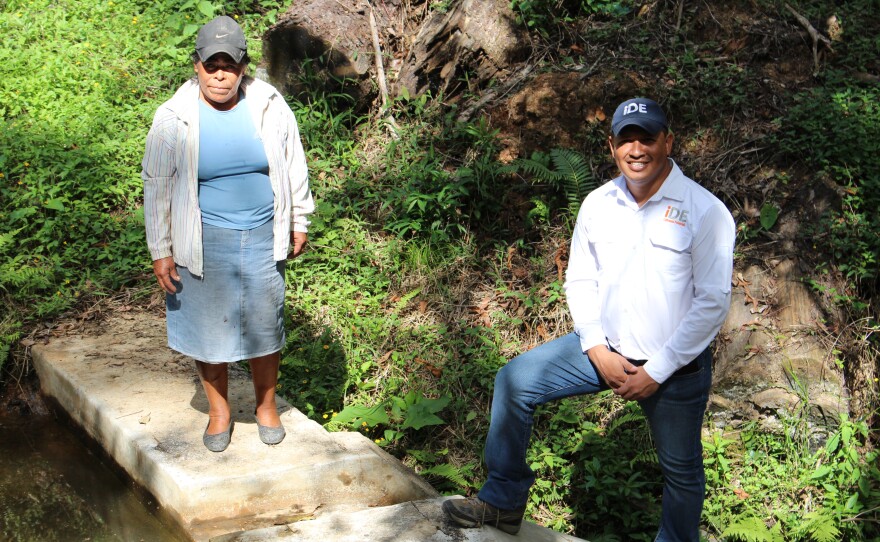Utah is one of the driest states in North America according to the National Climate Center. Modern infrastructure, technology, government appointed officials and locals who care about our natural resources help farmers to grow our food year after year.
UPR’s agriculture reporter Bronson Teichert traveled to Central America to report on the water challenges Honduran farmers face in a country where help is far from reach.

Water, the resource that can keep you and an entire country’s economy alive. From your kitchen sink to the Flaming Gorge Dam, it all depends on how you use it.
Agriculture is one of the main exports for the country of Honduras. To grow coffee in the higher elevations water isn’t a huge problem, especially during the rainy season. But after the coffee harvest is over, people are trying to grow other crops to sell and provide food for their own families. As the summer months pass so does access to water.
In the upper watershed of the southwest region of Honduras, some farmers work together with non-governmental organizations like International Development Enterprises or iDE to preserve water. Jose Luis, an agriculture climate smart facilitator for iDE says sometimes it’s the local people who have take action when it comes to issues like water use.
“In every watershed there is a watershed council where they meet and make decisions,” Jose Luis said. “The leaders of the different groups bring the message of what projects they are working on to the people they represent.”
Maria Gloria Martinez is a farmer in the area of Batoro and president of caja rural, which is the name of the local watershed council. At first I thought she was going to take us on a tour of where she was growing crops. We were on top of a mountain looking down on a think canopy of trees. We started down a dirt road on a steep hill when Martinez left the road and took us through the thick forest with varieties of pine trees native to central America and knee high grass. The path was barely visible as we walked further down into a ravine.
After 15-20 minutes of walking, I was starting to wonder why anyone would hike clear down here every day to work on their farm. Then I heard it, the one thing Maria Gloria Martinez was most proud of - water.
Instead of giving me a tour of her farm, Martinez took us to simple cement water structure that helps regulate the water from a small stream that comes from a local community further up the mountain. With instruction from local technicians, Martinez and her neighbors can now better manage the water for their farms and families.
“I represent 21 families and am in charge of managing the water for irrigation and for domestic supply,” Martinez said. “I’m very thankful for the project and all we have been able to achieve.”
The group “caja rural” is also a finance group. Jose Luis said groups like the 21 families in Batoro pool some of their money together for when they need to make bigger purchases like the cement water structure that benefit all the families.
“Thanks to the project they are able to store and provide water to the community after not having easy access to water,” Jose Luis said. “It is an example of the project improving the water source of people and also protecting the water source.”
Protecting the water source takes more than just managing how much gets to go downstream. The resources around the water need to be protected too. iDE helped the group of farmers find a solution that gives back to the land. Caja rural also acts as a mini bank according to Martinez. Whenever a farmer needs to take out loan, yes they need to pay it back, but the farmer is also required to plant a certain amount of trees.
“We also compromise with reforestation,” Martinez said. “Not only agricultural practice, but we are also reforesting the woods that have been damaged by pinewood pests. Each family is in charge of planting ten trees every year.”
The trees help prevent soil erosion, but Martinez and the other farmers also plant living barriers, which are plants with wide leaves that build a literal fence to stop erosion. Throughout the forest surrounding the stream, you can see where the farmers have built other barriers out of wood to hold the soil in place.
“Thanks to the project we have learned that we have to reforest the woods,” Martinez said. “Now we are realizing that the climate is warmer than before. We have improved living in many ways. Now we are able to grow watermelon, beans, corn, salads and before it wasn’t possible because sometimes it was raining and sometimes it wasn’t.”





